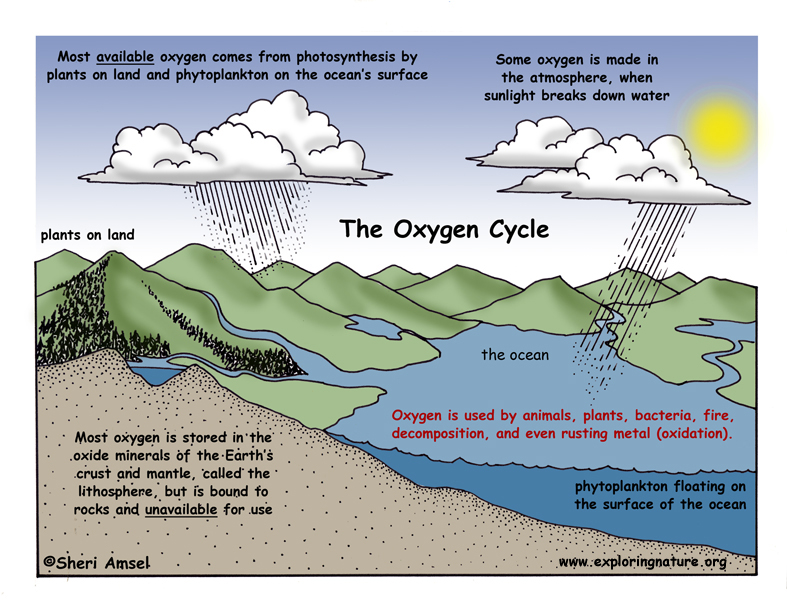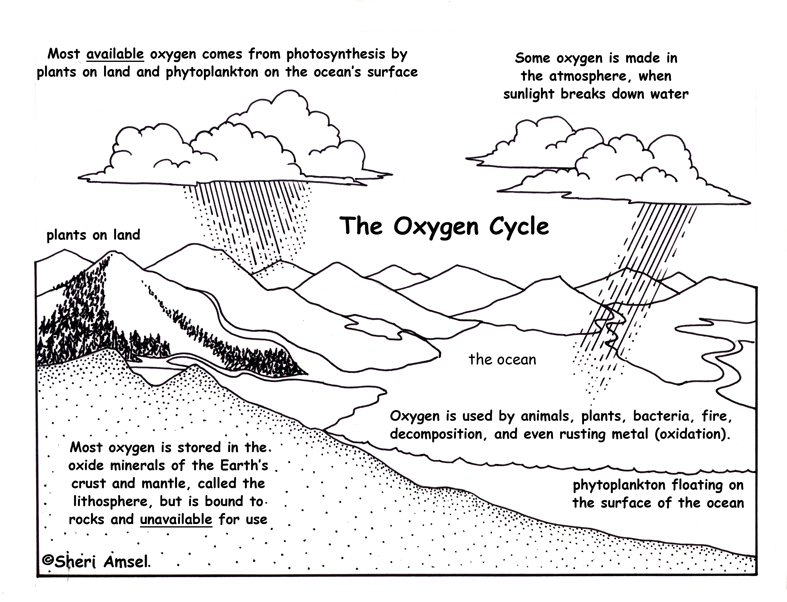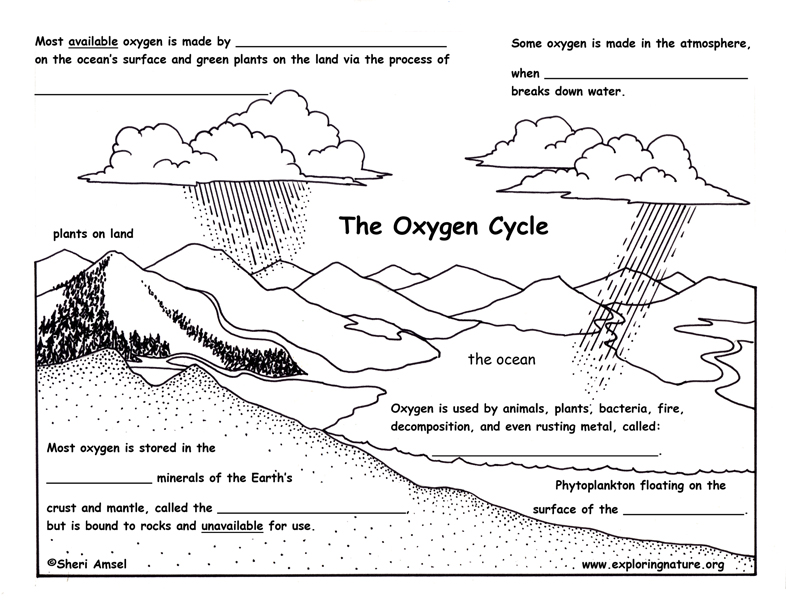

There is a cycle on Earth that replenishes the vital supply of oxygen that all living things need to survive.
Why is oxygen so important?
1) We use oxygen for respiration and it’s a process we can never stop doing until we die. We inhale oxygen and exhale carbon dioxide along with all animals, plants, and even bacteria.
2) When plants and animals die and decompose, that process uses oxygen too.
3) When you burn a fire it uses oxygen.
4) Even rusting metal uses oxygen. (This is called oxidation.)
Oxygen is needed for processes all over the Earth. With so many living using oxygen, it is important that the oxygen cycle is always making more!
Where do we get oxygen?
1) Some oxygen is made in the atmosphere, when sunlight breaks down water.
2) A lot of oxygen is stored in the oxide minerals of the Earth’s crust and mantle, called the lithosphere. This oxygen though, is bound to the rocks and can’t be used by living things.
3) Most oxygen available to us comes from photosynthesis made by plants on land and phytoplankton floating on the surface of the ocean. Photosynthesis is a process where the organism, powered by sunlight, takes carbon dioxide and water and releases oxygen and sugar. This is how they make energy for themselves and luckily, oxygen for us!
To make black and white copies for your whole class, see the copy-friendly version below.
When you research information you must cite the reference. Citing for websites is different from citing from books, magazines and periodicals. The style of citing shown here is from the MLA Style Citations (Modern Language Association).
When citing a WEBSITE the general format is as follows.
Author Last Name, First Name(s). "Title: Subtitle of Part of Web Page, if appropriate." Title: Subtitle: Section of Page if appropriate. Sponsoring/Publishing Agency, If Given. Additional significant descriptive information. Date of Electronic Publication or other Date, such as Last Updated. Day Month Year of access < URL >.
Amsel, Sheri. "Oxygen Cycle Description and Assessment" Exploring Nature Educational Resource ©2005-2024. December 14, 2024
< http://exploringnature.org/db/view/Oxygen-Cycle-Description-and-Assessment >


